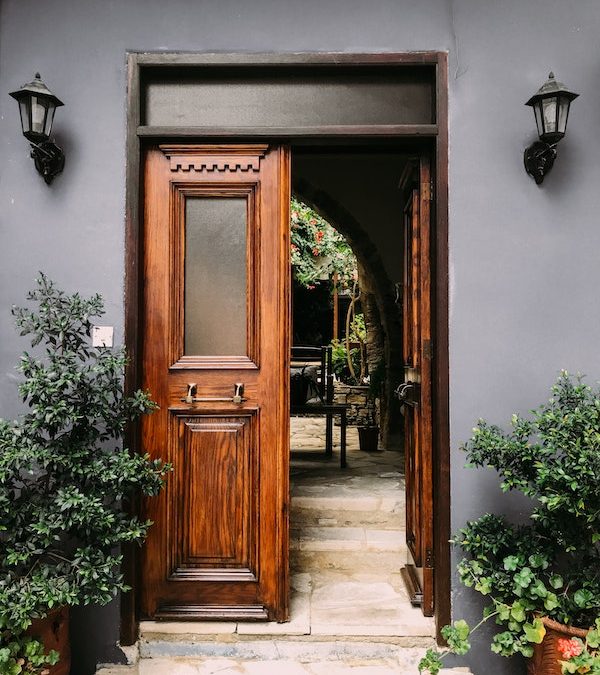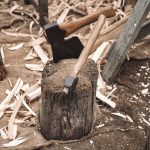Woodworking has been a vital aspect of Moroccan culture since ancient times. From grand palaces to humble huts, our traditional woodworking styles have adorned many structures throughout the ages.
One must understand that traditional Moroccan woodworking is heavily imbued with symbolism and customs. Every element from the type of wood used to the design itself carries meaning, which often reflects local beliefs or values. For instance, certain species of tree might be chosen for their spiritual significance while specific shapes or motifs are used as symbols of protection. Even color sometimes plays a role!
But there’s more than just symbolic value when it comes to Moroccan woodworking styles; there’s also the functionality. Our craftsmen pay close attention to how each piece will be used so they meet practical demands as well as aesthetic ones. This means that materials must be carefully selected based on strength and durability while techniques like joinery and carving add stability and beauty at once. All these elements come together to create works of art that last through generations!
Overview Of Techniques
Woodworking is an ancient craft, and Moroccan styles are a unique part of the tradition. Traditional techniques have been passed down for generations, each with its special method of hand-carved wood panels creating exquisite pieces of art. For centuries, woodworkers in Morocco have been using their craftsmanship skills to create beautiful furniture and decorative items from local woods.
One important technique used by Moroccan craftsmen is sawing methods. This involves cutting boards into precise shapes as dictated by the design plan. Sawing requires great skill and precision because it can make or break a project if not done carefully. Sawing is one of the most challenging stages of the woodworking process due to the high level of intricacy required. However, achieving precision in this step can lead to the most gratifying results.
Another traditional artisanal woodworking techniques used in Moroccan woodworking are hand carving. Hand-carved and carved wood panels’ intricate designs give objects more character and beauty than those made with machines alone would possess. It’s often said that no two carvings will ever be exactly alike since they rely on the individual artists’ creativity and style while working with wood materials. By combining both machine-made cuts and hand-carved details, Moroccans have created truly stunning works over time.
Lastly, finishing processes are required in any type of woodworking project. This includes sanding, polishing, staining, and varnishing surfaces to give them a smooth finish and protect them against wear and tear. Moroccan finishes usually feature bright colors like turquoise blue or red which add vibrancy to wooden pieces. These touches bring out, even more, intricacy within their projects’ designs making them even more eye-catching! With these steps combined, you can see why handmade Moroccan woodwork has become so popular in recent years; there’s simply nothing else quite like it!
Types Of Wood Used
Moroccan woodworking is an ancient craft that uses traditional techniques to create beautiful pieces of art. The diverse array of woods employed in this woodworking technique is a reflection of the country’s abundant cultural legacy. Various kinds of moroccan woodwork are favored for specific projects and tasks. From cedar and olive trees to juniper and palm, each type of moroccan woodwork has unique characteristics that make it well-suited for a particular purpose.
Moroccan woodworkers often favor cedar wood as it is robust, long-lasting, and reasonably priced. It can be carved easily into intricate shapes or finished with a glossy sheen, making it ideal for constructing furniture or decorative items. Juniper is commonly used by Moroccan craftsmen thanks to its malleability when wet. This makes it perfect for carving delicate designs into wooden surfaces such as trays and boxes.
Palmwood is another option often chosen by Moroccan craftsmen because it can withstand harsh weather conditions without warping or cracking over time. Its light color adds a warm touch to any piece while still providing adequate protection from sun damage. Olive tree wood is favored by many because of its natural resistance against rot and decay, making it suitable for outdoor applications like fences and patio decks.
Acacia is known for its beauty and versatility both indoors and outdoors. It can be left unfinished to show off its unique grain pattern or stained in vibrant colors if desired. Acacia can handle moisture better than other types of hardwoods so it’s great for creating shelves, tables, chairs, doors, cabinets- just about anything you need! No matter what kind of project you’re working on, there’s sure to be a Moroccan wood suited just right for your needs.
Tools And Materials Necessary
To perform traditional Moroccan woodworking, one needs to possess skill, commitment, and the proper equipment. To acquire mastery in this woodworking technique, access to materials such as the following is required:
- Woodworking Tools – This includes chisels, saws, mallets, and other specialized tools for carving wooden pieces into intricate designs.
- Moroccan Wood – Cedar or pine are the most common woods used in traditional Moroccan woodwork due to their durability and beauty when carved.
- Wood Carving Design Elements – Intricate design elements such as geometric shapes and arabesque motifs can be found on many items made with traditional Moroccan woodworking techniques.
Apart from the aforementioned materials, it is necessary to comprehend the means to safeguard your work. This can be achieved by employing special treatments such as varnishes and waxes that guard the piece against deterioration with time. It’s imperative to learn about different finishing techniques so you can give your finished item a unique look that stands out from all others
Moreover, knowledge of joinery processes is key when constructing furniture pieces or decorative objects; this information allows you to create complex structures without compromising on strength or stability. In the end, understanding proper sanding techniques helps assure smooth surfaces and precise detailing which gives any project an elegant finish.
Creating beautiful works of art with traditional Moroccan woodworking techniques takes practice but produces stunning results that last for generations! With the right materials and patience, anyone can master this ancient craftsmanship for themselves or those they love.
Carving Techniques
Moroccan woodworking is renowned for its intricate and beautiful carving techniques. The skill of traditional Moroccan carvers has been passed down through generations, resulting in a vibrant craft that continues to be admired today. To truly appreciate the artistry behind this exquisite form of woodwork, one is needed to understand how these unique carving techniques are utilized.
The following table outlines some common methods used in traditional Moroccan woodcarving:
| Traditional Carving | Moroccan Carving | Woodworking Carving |
|---|---|---|
| Chip Carving | Relief Carving | Inlay Carving |
| Incising | Intarsia | Carved Mouldings |
| Hollowing Out | Repoussé | Texturing |
Each technique produces stunning results with distinct characteristics and textures. Chip carving involves removing small bits from the surface of the wood to create decorative designs, while incising consists of cutting straight lines into the material. Relief carving requires chiseling away at the wooden block until a bas-relief or 3D effect appears on the chosen object’s surface. Hollowing out and intarsia involve utilizing contrasting woods to achieve an eye-catching pattern or design. Repoussé entails pushing metal sheets outward from their base support, creating sculptures that often feature inlays and hand carved, wood moldings as accents. Lastly, texturing can add texture to any piece by scraping off layers of the material using various tools such as gouges, rasps, and files.
These ancient methods have been perfected over time and continue to inspire modern woodworkers who strive to recreate original pieces using authentic techniques. If crafting ornate furniture or delicate jewelry boxes, there is no shortage of possibilities when experimenting with classic handmade Moroccan woodwork carvings styles!
Intricate Designs
Moroccan woodworking is renowned for its intricate patterns and wooden carvings. From the simplest of tables to grand palatial doors, each piece showcases fine details that make it truly unique. Woodcutting tools are a high priority in creating these beautiful decorative motifs. The most skilled craftsmen employ various specialized tools such as chisels, gouges, saws, and others in order to meticulously shape their designs.
Moroccan woodworking has traditionally utilized various types of woods such as cedar wood, walnut, ebony, and rosewood. The type of wood chosen depends on the purpose of the object. Some pieces require hardwoods while others benefit from softer woods like pine or fruitwood. Each type has characteristics that can be highlighted through skilled carving techniques which adds a special touch to every item produced by expert craftsmen.
The rich heritage of Morocco inspires many traditional motifs seen in various items crafted today. These include the star design found on furniture, geometric shapes often featured in doorways and windows, and animal figures including camels and horses frequently seen in palace decorations or everyday objects like boxes and jewelry cases. Moroccan culture has embraced intricate carvings over time, which are now considered a significant part of it. These carvings are often used as symbols of wealth or status within local communities.
From delicate fretwork trays to intricately hand carved on chests – there’s no limit when it comes to expressing creativity through Moroccan woodworking styles! All manner of materials can be turned into works of art when masterful hands come together with imagination and skillful craftsmanship. With so much beauty at our fingertips, why not take advantage of this timeless tradition?
Coloration Processes
Coloration processes are the heart of traditional Moroccan woodworking. It is like a painter carefully bringing their canvas to life with each stroke of color. From wood-staining to wood-burning, from wood-painting to wood-polishing and even wood-dying, there are many ways that one can give life to wooden furniture.
The most popular method used in Morocco is staining; it adds both depth and character while highlighting the natural grains found within the surface of the material. This technique could be the perfect solution if you’re aiming for a weathered appearance. Wood burning is another great way to create a unique aesthetic for your piece, as well as add texture and dimension.
Painting can bring out any design or pattern you choose – whether it’s abstract or realistic – but must be applied with care if you want long-lasting results. On top of that, polishing helps accentuate these images and designs further by giving them more shine and vibrancy. Lastly, dying your materials allows for endless possibilities when it comes to colors – no matter what shade or tone you’re after, there’s something perfect for everyone!
Traditional Moroccan woodworking styles rely heavily on the proper application of all of these coloring techniques for pieces to reach their full potential aesthetically speaking. Each process needs attention given to detail as well as practice for one to become a master craftsman at creating beautiful works of art through wooden furniture transformation.
Commonly Produced Items
Now that the background of the traditional coloration processes has been discussed, we can move on to the discussion of common items produced by Moroccan woodworking craftsmen. From furniture and trinkets to toys and intricate carvings, there is no shortage of handmade products crafted with skillful precision in Morocco:
- Moroccan Furniture – Many types of furniture are available from Moroccan artisans, including chairs, tables, beds, sofas, and more. These pieces often feature detailed wood carvings along their surfaces or unique patterns carved into the legs for a truly authentic look.
- Woodworking Crafts – Wooden trinkets such as boxes, clocks, and mirrors are also commonly produced by skilled artisans in Morocco. Handcrafted wooden animals are another popular item among tourists looking for something special to bring home from their travels.
- Traditional Decoration – Intricate wood carvings featuring traditional decorations such as geometric shapes or Arabic writing adorn many homes in Morocco today. Wall hangings made out of colorful fabric stitched together serve as an excellent addition to any room’s decor and add a touch of exotic flair to your living space.
From modestly sized trinkets to ornately designed furniture pieces, handmade Moroccan woodwork is timeless and captivating in its beauty and complexity. In case you’re looking for something classic or modern, it’s easy to find something perfect for your own home when browsing through these images of all the offerings sold at local markets throughout Morocco!
Preservation Methods
Preserving traditional Moroccan woodworking styles requires knowledge of the proper preservation methods. Preserving the woodwork is imperative in maintaining the integrity of these timeless designs and ensuring that they can be cherished for generations to come. Traditional methods such as drying, coating, and treating with natural oils help protect against environmental elements like moisture and heat while preserving the beauty of the whole woodwork. Restoration techniques are vital in restoring damaged pieces of traditional Moroccan woodworking to their original condition. Applying lacquer or varnish can protect from wear and tear over time.
Moreover, waxing helps create a barrier between the wood’s surface and any dirt or dust particles that accumulate on it inside. Other helpful tips include storing furniture away from direct sunlight, using coasters for drinks, and frequently cleaning with soft cloths so that no scratches occur when cleaning. By following these simple steps, one can maintain the value of their traditional Moroccan woodworking piece for years to come without compromising its integrity or craftsmanship.
Famous Artisans
Moroccan woodworking is a rich tapestry of artistry, skill, and craftsmanship. It’s like a masterfully woven rug – each artisan adds their unique stitching to create an intricate design that has been passed down through the generations. From traditional designs to modern interpretations, the world of Moroccan woodworking stands out as a testament to the talent and expertise of those who practice it
The following table showcases some of Morocco’s most famous artisans:
Each one brings something special to the field; Farah Lakhdar for her delicate marquetry panels and Hamid El Kadiri for his sculpted panels are just two examples. Abdelaziz Zaoui is renowned for his ornamental carvings with geometric motifs while Mohamed Khemirimzoughane creates stunning works using traditional turnery techniques and incorporating beautiful ornamental patterns into his pieces. All four come together in order to paint a vivid picture of what traditional Moroccan woodworking styles look like today.
Every piece created by these talented craftsmen tells its own story, transporting us back through time to when these ancient techniques were first developed centuries ago. Even now they remain relevant and admired across Morocco and beyond – a testament indeed to the enduring appeal of this timeless art form.
Frequently Asked Questions
How Long Does It Typically Take To Produce A Traditional Moroccan Woodworking Item?
Crafting an item through traditional Moroccan woodworking can vary greatly in terms of the time required. The duration required for a traditional Moroccan woodworking project can vary and relies heavily on the project’s size, complexity, and skill level of the artisan performing the work. One can usually expect that creating a complex design takes more time than a simple one.
For those interested in learning more about this craft, understanding how much time is required to produce a piece is key. Traditional Moroccan woodworking tends to be quite intricate and labor-intensive; so while certain projects only require a few weeks, such as small decorative pieces, other larger items may need months or even years to complete. Further, different types of objects have their own unique sets of challenges that affect not just duration but also cost.
The best way to get an accurate estimation for your specific project would be to speak with an experienced artisan who specializes in Moroccan woodworking styles. They should be able to give you a better idea of what kind of timeframe you’re looking at based on the type and scope of the object you want to be created. This allows potential customers to plan financially and logistically if they are getting something crafted by a professional tradesperson.
Are Traditional Moroccan Woodworking Styles Still Popular Today?
Are traditional Moroccan woodworking styles still popular today? This is a significant question to think about, as these traditional artisanal woodworking techniques and styles have been around for centuries. As a traditional Moroccan woodworking expert, it’s needed to be aware of the changes in popularity between contemporary and traditional artisanal woodworking techniques and styles.
It has become clear that while some aspects of traditional Moroccan woodworking are still widely practiced today, other areas have shifted towards more modern approaches. For example, certain tools such as saws or chisels remain largely unchanged; however, the methods used to join pieces together could vary greatly. Besides, much of the decoration associated with this type of work has seen significant modifications over time.
Today, many different types of wooden items made in Morocco utilize both contemporary and traditional artisanal woodworking techniques. These range from furniture and home decor items to musical instruments and toys. While craftsmen continue to use classic ways of working with wood, others choose more current designs that reflect their creative vision. The craftsmanship that blends traditional and modern techniques can be readily found in both cases.
Overall, it’s evident that although traditional Moroccan woodworking remains alive and well throughout the country, its presence in our lives continues to evolve alongside changing trends and tastes. In case you’re looking for something unique or just want an item crafted using timeless techniques passed down through generations – there will always be plenty on offer!
Are There Any Contemporary Takes On Traditional Moroccan Woodworking Styles?
Moroccan woodworking is a craft that has been around for centuries, and its intricate styles have captivated audiences across the globe. But what about today? Are there any contemporary takes on traditional Moroccan woodworking styles? Artisans in Morocco continue to use traditional woodworking techniques, while modern-day craftsmen utilize them to create one-of-a-kind works of art.
The combination of traditional methods and modern materials creates an exciting new way to approach this type of woodwork. Artisans who practice Moroccan woodworking can use their expertise to make pieces that are both beautiful and functional.
Woodworking-styles-morocco varies greatly depending upon the region where they were developed; some feature bold geometric shapes while others draw inspiration from nature. Craftsmen are pushing the limits of traditional Moroccan woodworking by integrating modern technology such as laser cutting or 3D printing into the crafting process, resulting in unique and innovative designs.
Using Moroccan woodworking-modern doesn’t mean sacrificing authenticity either – many experts still rely on traditional tools like chisels, saws, planes, drills, and sanders when making their work. Local woods like cedar and olive tree branches are often chosen for larger projects due to their durability and natural beauty. The wood is then cut according to precise measurements for each piece before being assembled with glue or nails. It’s amazing how much detail goes into creating something so exquisite!
Furthermore to classic wooden furniture like tables and chairs, contemporary Moroccan-wood styles-contemporary often include decorative items such as panels such as window and door frames or trinket boxes made from exotic hardwoods like mahogany or teak. And because it requires such skillful technique, each piece created by these talented craftsmen will be truly one of a kind – a testament to the sheer power of human creativity!
Traditional Moroccan woodworking is an ancient craft that has been popular for centuries. A single craftsman usually spends around 4 to 6 weeks creating an intricate work of art from start to finish. This is due in large part to the numerous techniques used throughout the process including carving, painting, and shaping.
The environmental impact of traditional Moroccan woodworking is minimal thanks to the use of sustainable materials such as reeds and natural dyes. Experienced craftsmen can avoid any health risks associated with traditional Moroccan woodworking by taking proper safety precautions.
In recent years, we have seen modern adaptations of these ancient styles become increasingly popular amongst interior decorators and collectors alike. With over one hundred distinct designs available today, each piece carries its own unique story that can be passed down through generations—a statistic worth noting! So if you’re looking for something special and timeless to add to your home or collection, look no further than traditional Moroccan woodworking.







